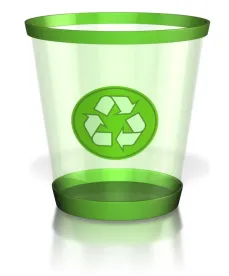“A long time ago in a [May 19, 1980 Federal Register] far, far away [or so it seems],” the U.S. Environmental Protection Agency (EPA) declared its authority to regulate all hazardous secondary material, whether discarded or reused, under the Resource Conservation and Recovery Act (RCRA), and that it would exercise its authority to promote properly conducted waste reclamation. Ever since then, a kind of Empire/Rebellion struggle has played out over the scope and extent of broad-based recycling exclusions to the RCRA’s solid waste definition.
Over the years, recycling exclusions generally focused on particular industries. However, EPA’s last final rule, issued in the October 30, 2008 Federal Register during the Bush administration, contained several much broader exclusions. Those exclusions covered a waste generator’s onsite recycling, offsite recycling in the United States, and transfers of hazardous secondary materials for recycling conducted outside the United States.
The 2008 rule prompted litigation from both industry and the Sierra Club. The Sierra Club also filed an administrative petition seeking EPA repeal of the final rule. On September 7, 2010, EPA reached a settlement agreement with the Sierra Club under which EPA agreed to issue a notice of proposed rulemaking and a final rule that addressed the Sierra Club’s concerns. EPA’s final rule announced on December 10 is the latest chapter in the ongoing saga.
The new final rule rolls back many of the Bush-era provisions that minimized agency filings and involvement. It contains revisions to the onsite generator recycling exclusion, replaces the exclusion for offsite recycling in the United States, eliminates the exclusion covering recycling outside the United States, and introduces a new exclusion for recycling of certain solvents. It also contains some new requirements applicable to all recycling activities, and to new variances and non-waste determinations for recycled materials.
EPA’s new final rule is intended to provide greater safeguards against sloppy and sham recycling. These provisions address accumulation of hazardous secondary materials when there is no near-term prospect for recycling, and require an up-front demonstration that the recycling process will generate a valuable product suitable for reuse. They also require offsite recycling by a facility with a Part B permit or interim status under the RCRA regulations, or by facility that has obtained a variance after meeting the same types of requirements imposed upon permitted and interim status facilities.
Offsite recyclers and waste generators engaged in onsite recycling must adopt new procedures that include notification and periodic updates of recycling activity, demonstration that the recycling is legitimate, documentation of when accumulation has commenced for the material being recycled, and compliance with recordkeeping requirements and with emergency response and preparedness procedures like those imposed on hazardous waste generators. In addition, the new rule provides a definition of “contained” that is intended to ensure proper storage of hazardous secondary materials.
Beside adding safeguards to two of the three exclusions instituted in 2008 and eliminating the third one, the new rule introduces an exclusion to cover the recycling of 18 commercial grade solvents. Under that exclusion, such solvents must be used in one of four industrial sectors that do not include waste management, and the remanufactured solvents must be employed for specified uses that do not include cleaning or degreasing.
The solvent exclusion is subject to notification and recordkeeping requirements similar to those contained in the previously described recycling exclusions. In addition, there must be compliance with the tank and container standards covering Part B permitted facilities and with air emission control requirements imposed under the federal Clean Air Act or, where not applicable, to the air emission standards covering Part B permitted facilities.
In its 2011 proposal, EPA sought to impose the new notification and containment requirements on facilities covered by a pre-2008 exclusion or exemption. In the preamble to its new rule, EPA has deferred adoption of those requirements have been deferred in order to more fully consider the comments and concerns that were raised. One pre-2008 exclusion that received particular attention is scrap metal recycling, since scrap metal being recycled may be left on the ground rather than in a receptacle.
The new provisions and a few other items of interest are summarized here.




 />i
/>i


